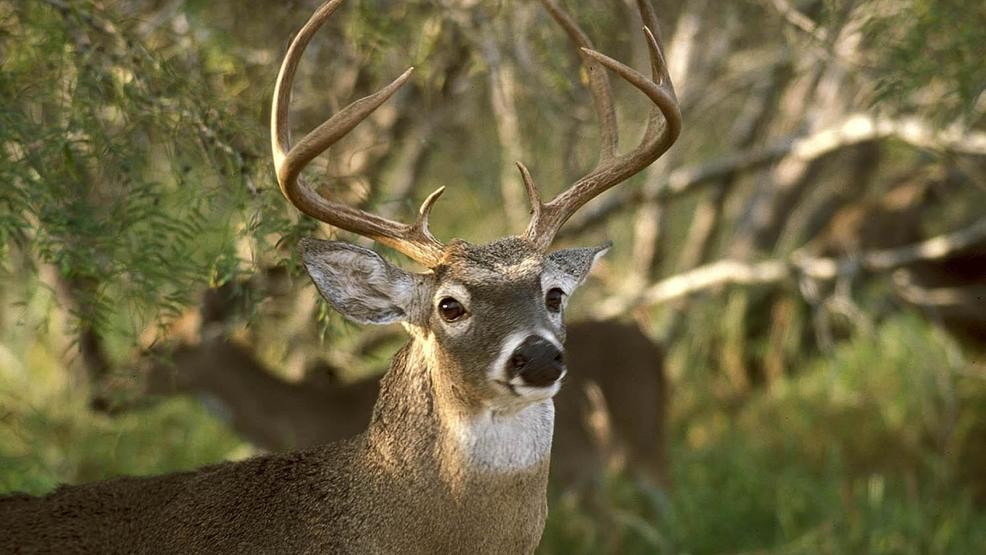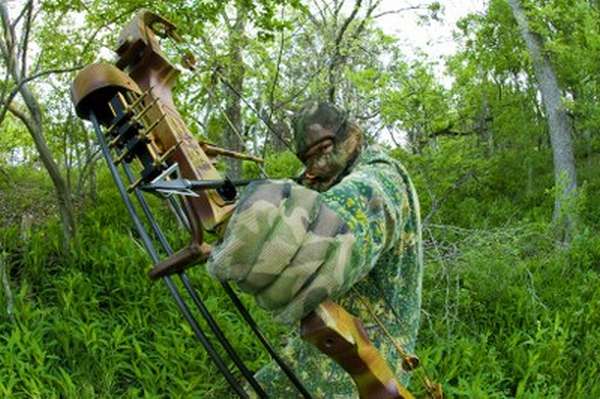Buck Movement During the Rut
The white-tailed deer breeding season has been strong this year. During the month of November, I received reports of intense rutting activity throughout much of Texas. Bucks were easy to spot for those that were able to spend some time in a stand. I think the strong rut was a product of good body condition in deer and colder than average temperatures.
To be clear, temperature does not impact the timing of the whitetail rut. Bucks can, however, more aggressive and more active for longer periods of time on cold days during the rut; not so much the case when it’s hot out. That puts a lid on everyone’s activity levels.
Whitetail breeding activity has been highly visible this season but I’ve seen years where it seemed like almost no whitetail rutting activity at all. Bucks and does still did their thing, of course, but sometimes rutting activity can be weak. In fact, I’ve seen years where it seemed as if deer just disappeared.

Where Do Bucks Really Go During the Rut?
Research on whitetail buck movement during the rut has found conflicting results. A number of research projects have affixed various types of tracking devices to bucks in an attempt to figure out what these guys are up to during the breeding season.
All of these studies can be summarized into a handful of bullets:
- Bucks can increase range and movement during the rut
- Mature bucks can decrease movement and focus on doe-rich areas
- Moon phase does not impact deer movement
- Breeding is determined by photoperiod (day length)
- Buck movement is highest at dusk and dawn
- Bucks are individuals and will act differently
Bucks Movement and Range Can Increase
The belief is that during the rut, “you never know what’s going to show up.” I believe that’s true any day we climb in a stand. Bucks can increase movement and range during the breeding season. This is the most exciting part about white-tailed deer hunting. The thought that on any day, at any time, anything can happen.
Research on buck movements during the breeding season has found that some bucks do move more, much more, during rut. They are also willing to move outside of their normal “home range.” To take advantage of this as a hunter you need to know when the rut occurs in the area you are hunting and then get into areas where bucks are likely to be cruising.
Mature Bucks May Move Less
Mature whitetail bucks may move less than other bucks during the breeding season. This contradicts the paragraphs above, but begins to makes sense once you wrap your mind around that we are only talking mature bucks now. Mature bucks are different than other bucks.
Mature bucks have more experience (surviving and breeding), they are the dominant deer in the woods, and they know where to find does. As a result, mature bucks can focus their efforts on areas known to hold does. These big-bodied deer are much less likely to be challenged by subordinates, so they end up moving less.
One study found that about 30 percent of the bucks in an area moved less during the rut. These bucks actually developed a search pattern that they repeated almost daily. Were these bucks looking in “doe hot spots” or merely staying with does until a mating opportunity presented itself? Either way, this sounds like the activity of older bucks as they would have the access/ability.
The key to hunting mature bucks during the rut then will be to find areas where does are known to frequent. Find areas were does feed and bed and hunt them, or get in between them. You shouldn’t have to wait long since bucks or doe/s (with a buck in tow) tend to repeat this pattern regularly.
Photoperiod Dictates Breeding, Deer Activity
Despite what your buddy thinks, day length dictates when the breeding season occurs within a deer herd each year. In fact, photoperiod determines most everything that whitetail do throughout the year, with some of the key items of interests being estrus in does and antler growth and shedding in bucks.
There is no doubt that geographic variation exists throughout the whitetail’s range, but breeding happens at the local level at the same time each year, rain or shine, hot or cold. Environmental conditions impact deer activity to some extent, but when it’s time—it’s time! Learn it, know it, use it.

Deer Movement Highest at Dusk and Dawn
It’s no wonder most deer hunts are referred to as morning hunts or evening hunts. White-tailed deer movement increases at dusk and dawn. Whether you hunt mornings and evenings because that’s they way you were taught or the way you learned, research has substantiated that buck movement is highest at these times, even during the breeding season.
So rut or no rut, make sure you are in the stand for at least the first few and last few hours each day. The first and last hours of the day are pure gold. Not a morning person? Don’t blow your stand out by showing up late! That will only tip-off bucks that are already on hoof. Stick to the evening hunt and make the most of your time in the woods.
Bucks are Different, Movement Varies
We can identify the peak of the breeding season in an area but we can not predict the behaviors of individual bucks. It turns out that bucks have different strategies for how they intend to pass on their genes.
We covered how some older bucks may decrease movement during the rut in order to stay with a doe or doe groups, but some older bucks do the opposite. In these situations, is this behavior simply in the buck’s nature or is an increase in movement and/or range a product of the herd or habitat in which he lives?
The answer is likely yes. A countless number of factors dictate buck movement during the rut. As a hunter, the key is to learn as much as possible about the deer herd and area you hunt and then decipher how bucks will behave and then when they will use the area you hunt during the rut.

Key points to know about an area you are hunting:
- When is the rut?
- Where are does feeding and/or bedding?
- Where are travel corridors?
Once you’ve answered these three questions, then it’s a matter of getting into position to take advantage of the limited or expanded movement of bucks in the area. You can do all-day sits, but deer movement will still be highest at dusk and dawn.
Seasoned hunters know to take advantage of cold fronts during the hunting season as deer movement generally increases as temperature decreases. This holds true during the rut as whitetail bucks will stay on their feet for longer periods of time.












